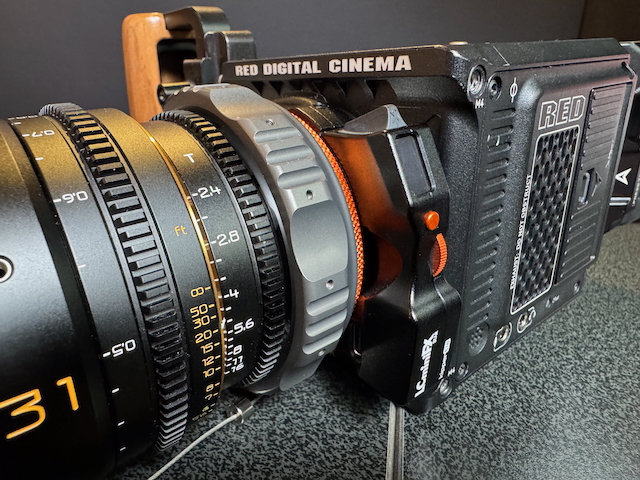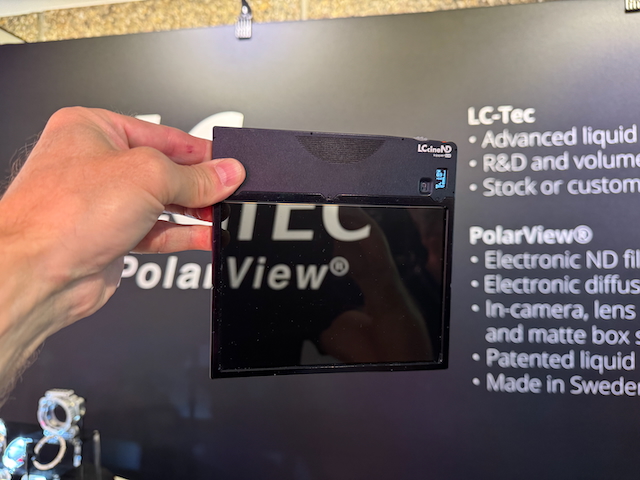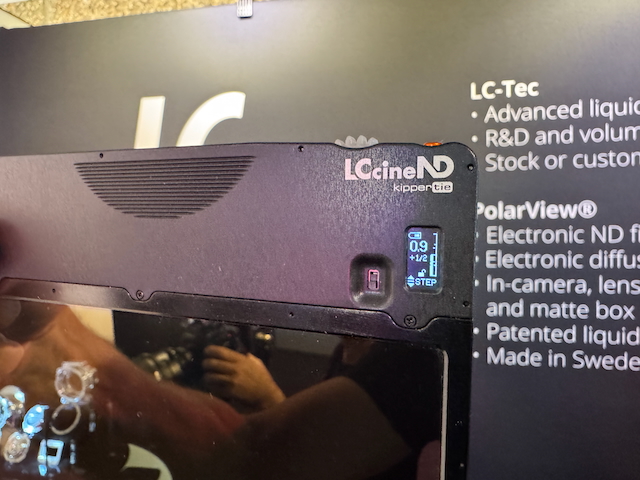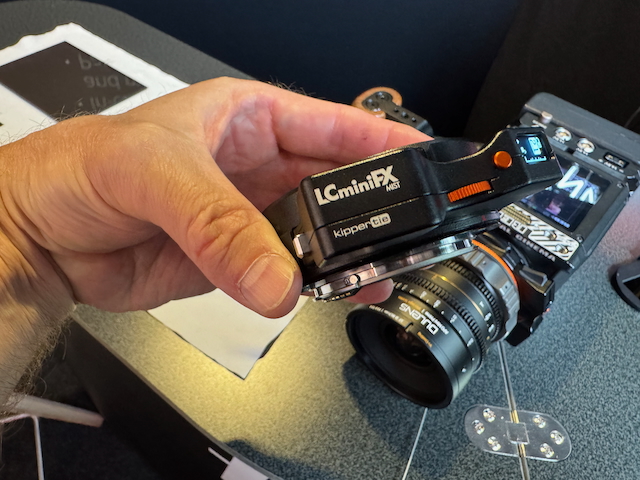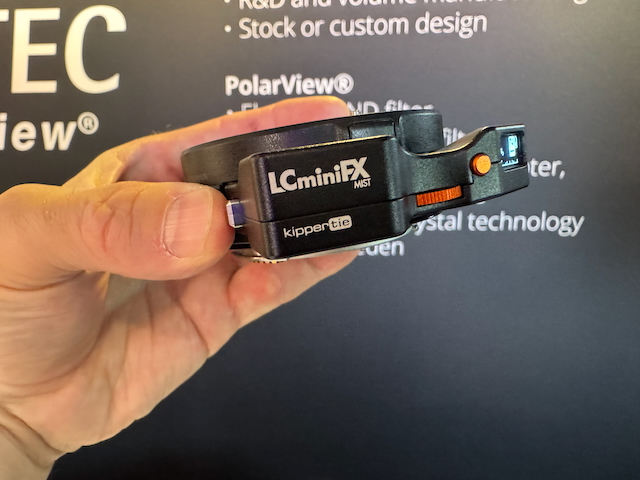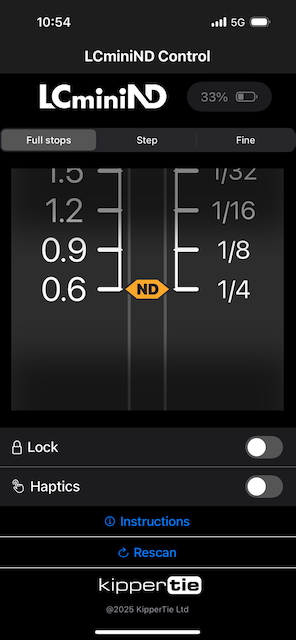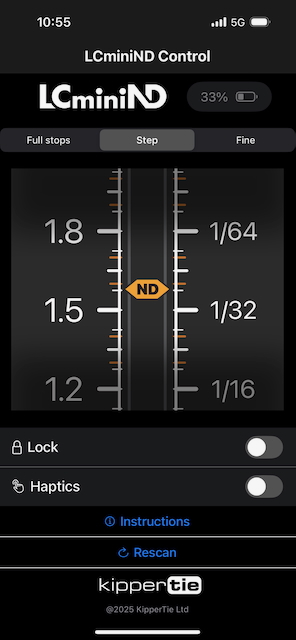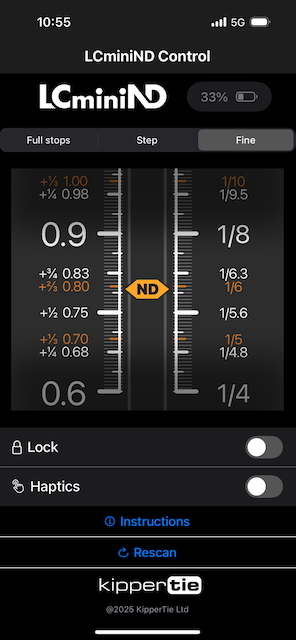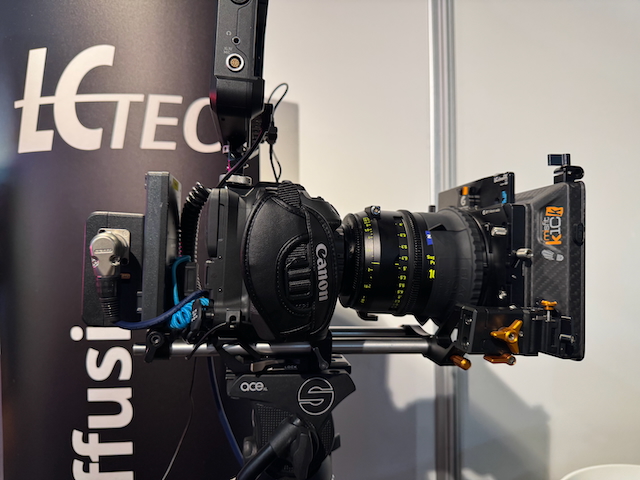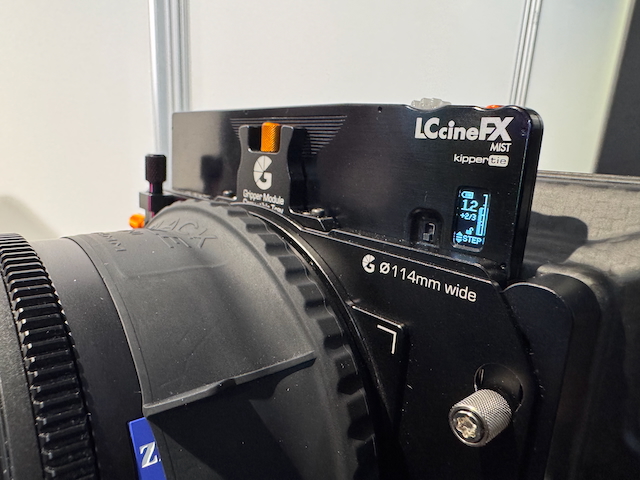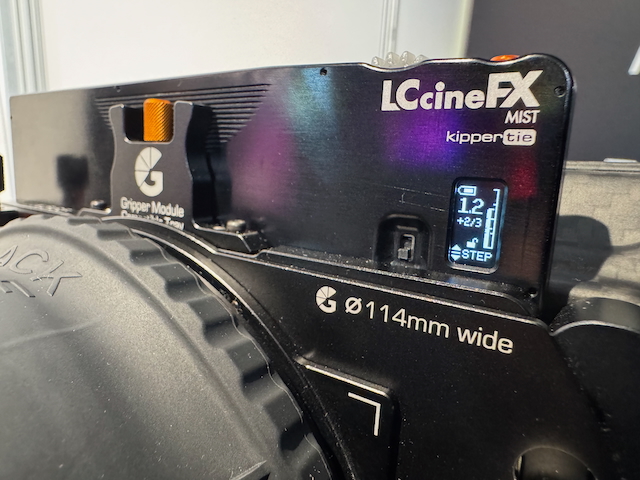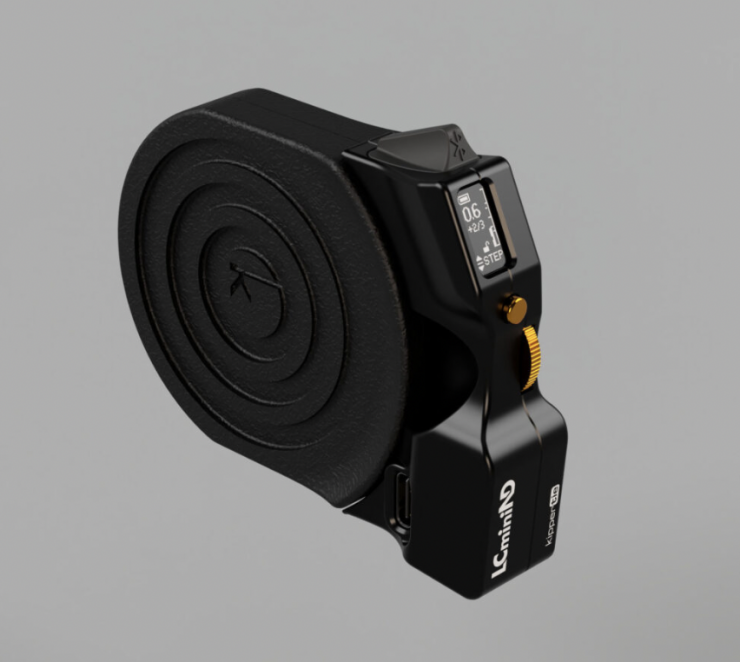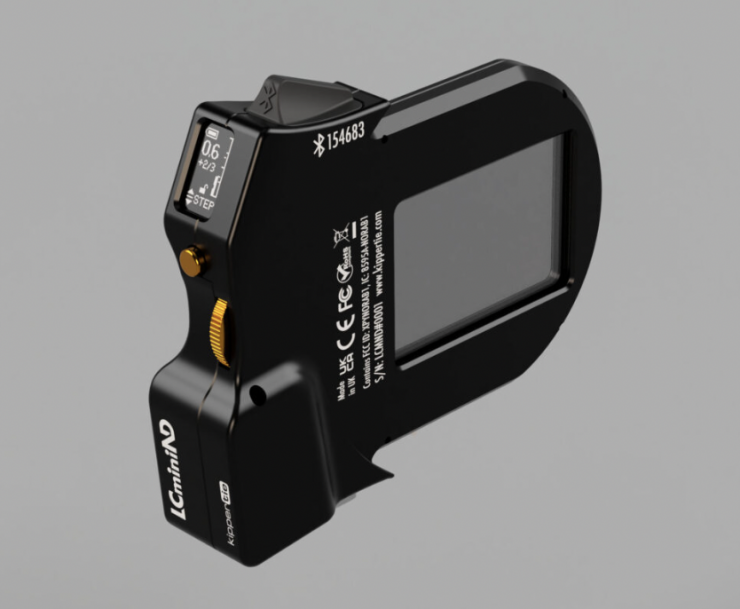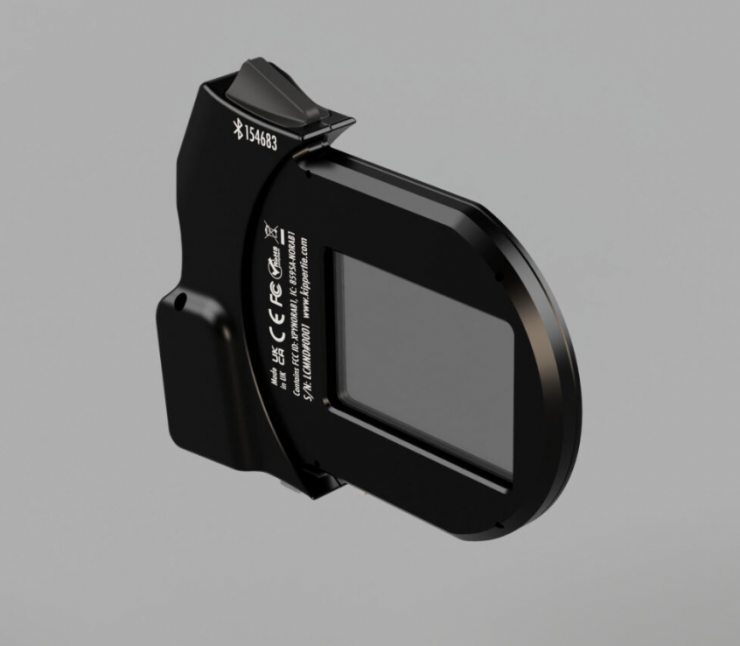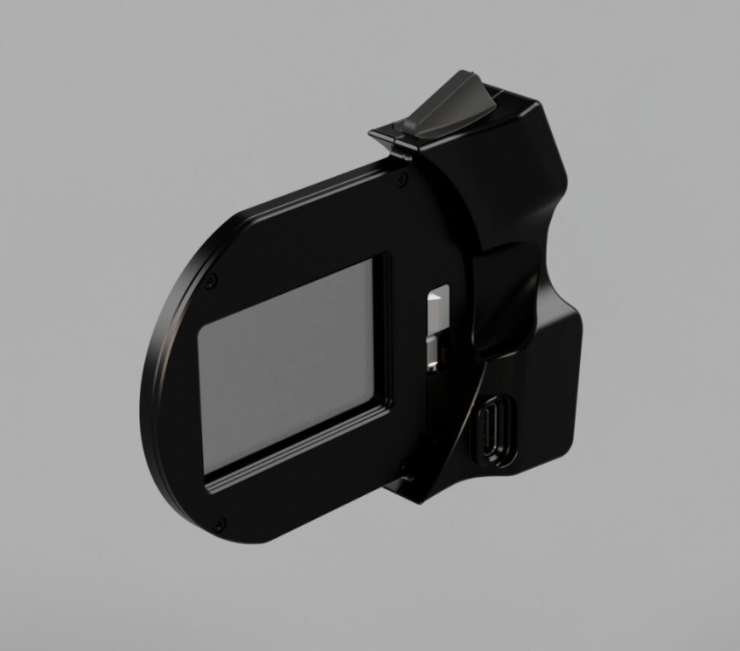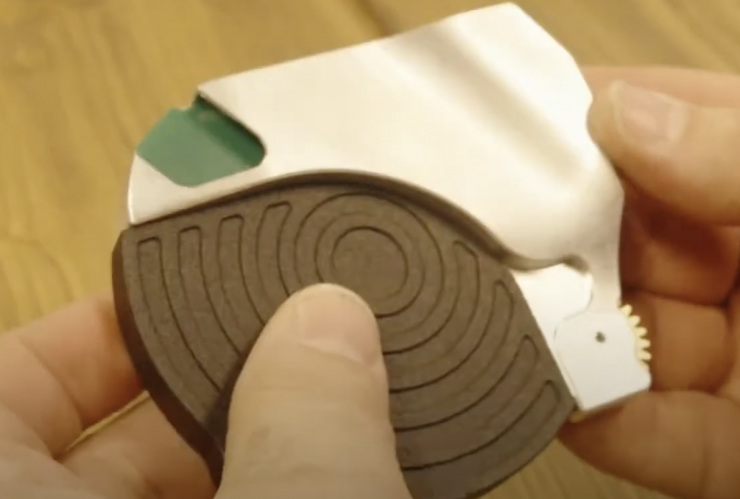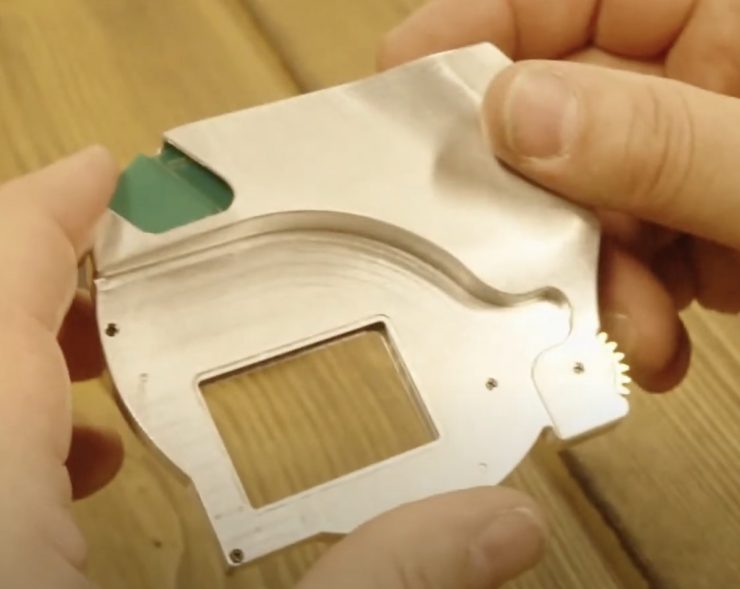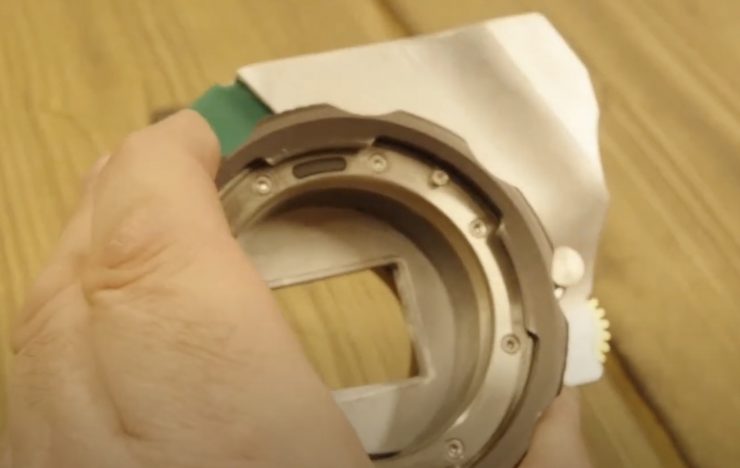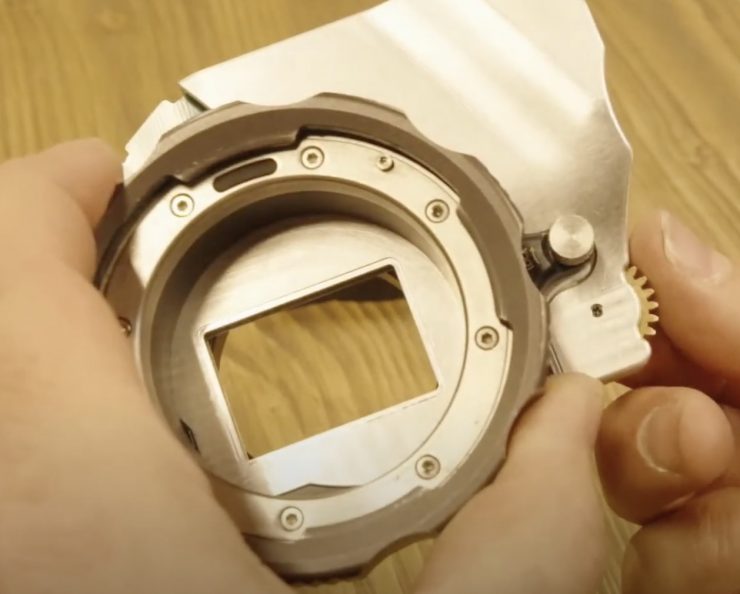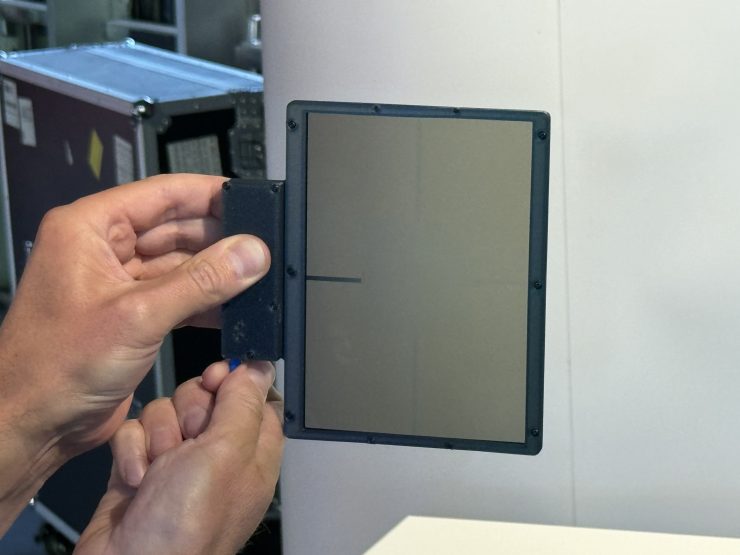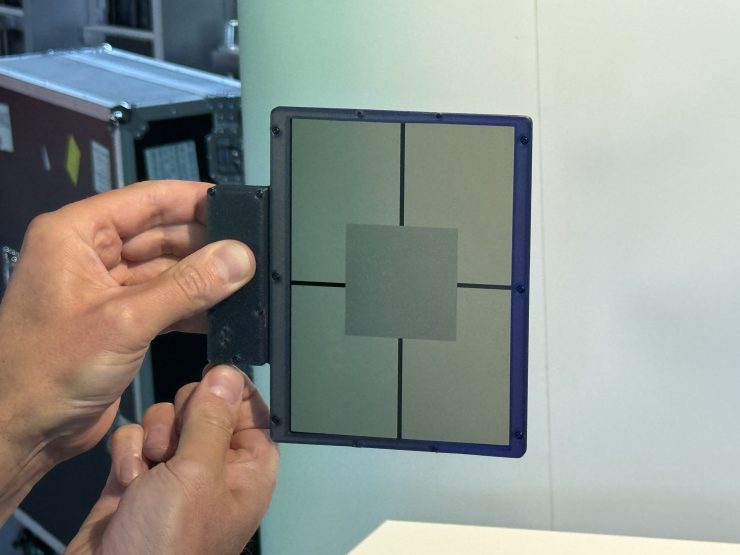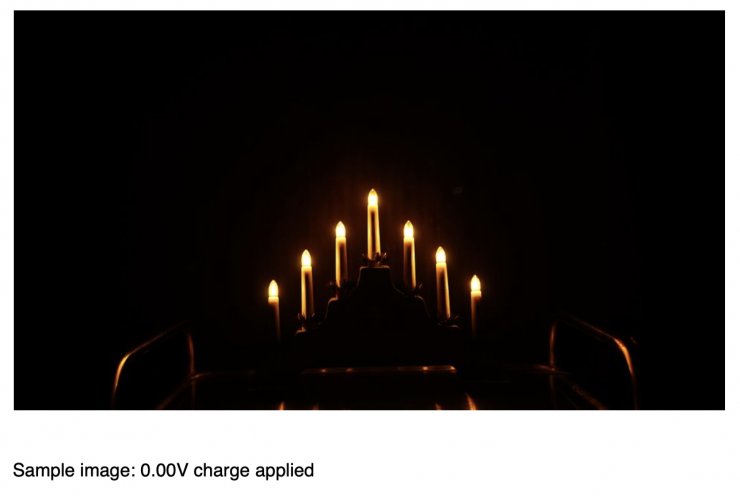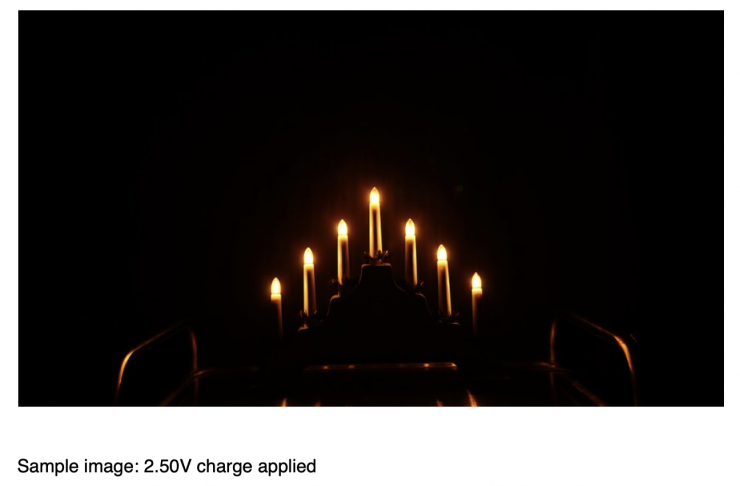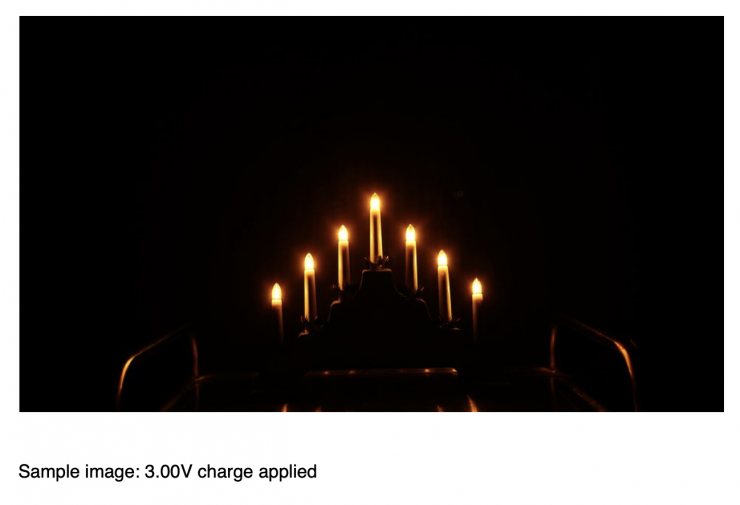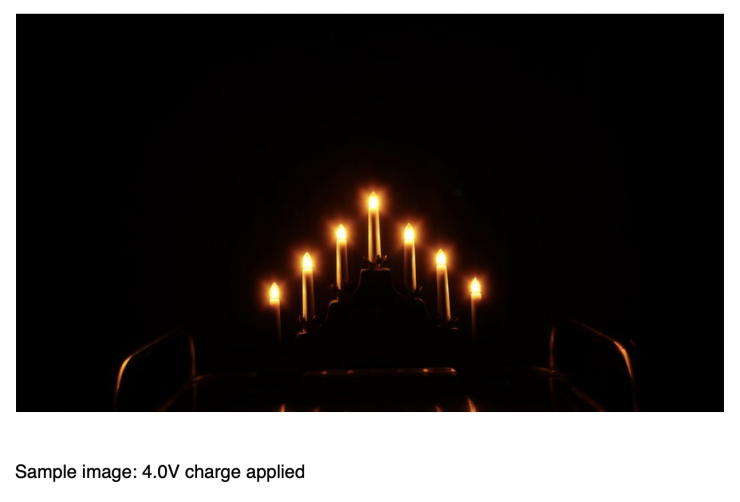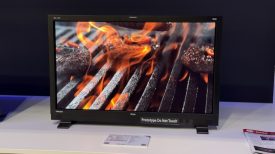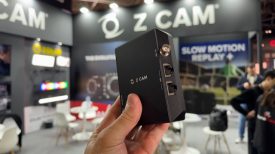At IBC 2025 in Amsterdam, Kippertie and LC-Tec were showcasing their latest Electronic Variable ND and Electronic Diffusion Solutions.
KipperTie will have a range of solutions, including both lens adapters with eND, as well as eND in 4 x 5.65″ filter stages that can be controlled directly on the filter, from a lens motor, or through a free iOS app.
The app is very cool, and it allows you to remotely control the amount of eND in very small amounts. This could be very useful for a lot of shooting scenarios.
The filter stage versions of the eND and electronic diffusion won’t be available till early next year. LC-Tec has improved the electronic diffusion, and now there is almost no visible light loss.
The KipperTie LCminiND is already shipping, and it is a precision electronic ND cartridge with Bluetooth control for Canon RF-to-EF and compatible adapters.
This looks like a good solution if you are running EF glass with a RED Komodo, Komodo-X, Canon R5, Canon EOS R50, etc.
KipperTie will also have the following versions available soon:
- Canon RF-EF
- Canon RF-PL
- Sony E-PL
- Nikon Z-PL
- Leica L to PL
These should be available at the end of this month.
KipperTie LCminiND

Key features
- Infinitely variable ND between 0.6 and 2.1 (2 to 7 stops)
- Minimal color shift and polarization artifacts
- Bluetooth control with a dedicated iOS app
- Robust CNC-machined anodised aluminum construction
- Individually calibrated for precision
- Minimum 24-hour runtime between charges
KipperTie’s new LCminiND Electronic ND drop-in filter adapter utilizes technology developed by LC-Tec. It is initially available for Canon’s popular Drop-In Filter Mount Adapter EF-EOS R with Variable ND Filter and any third-party versions that can take the same size filters. KipperTie also has

The LCminiND Electronic ND drop-in filter adapter just fits into the Canon Drop-In Filter Mount Adapter EF-EOS R with Variable ND Filter like Canon’s original VND filter. This opens up the potential to use electronic ND on both Canon and Red cameras, as well as a broad range of others, including L, E, and Z host mounts, with EF, PL, LPL, and more as the lens mount.
There is a myriad of adapters on the market that utilize drop-in filters, and some of them utilize electronic variable ND. Cameras from Kinefinity and Z CAM, just to name a few, have had adapter mounts for quite some time that have electronic variable ND.
The new LCminiND offers an ND range from 0.6 to 2.1 stops, and it allows you to have precise control over how much vND you want to introduce. The only issue with drop-in electronic variable ND filters is that you can’t have them set to 0 ND. This means you will need to take the filter out if you are working in lighting conditions where ND isn’t required.
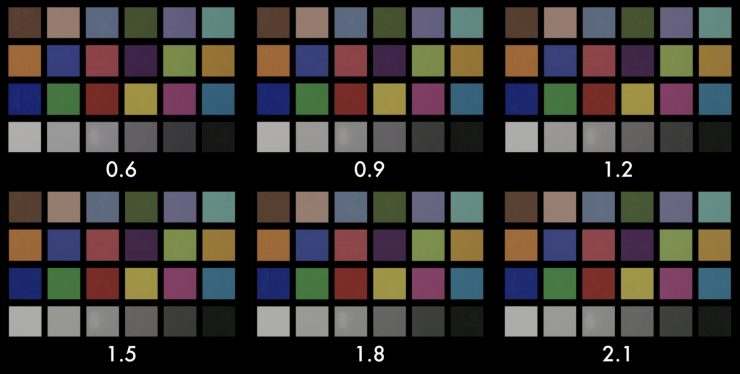
Colour accuracy and internal consistency across the ND range is claimed to be excellent. The shift from clear to ND depends on the clear filter employed, but is typically a small magenta correction.
How do you control it?
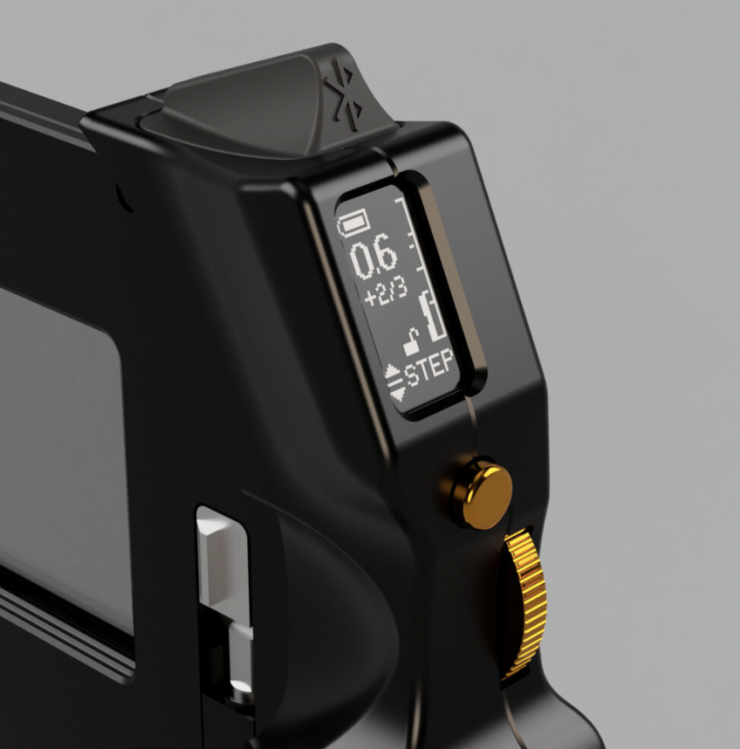
There is a button and a dial on the LCminiND that you can use to make adjustments to how much ND you are applying. These allow you to make pretty precise adjustments.
Users can select increments of full, half, third, and quarter stops, or use the fine mode to adjust ND.
The ultra-small daylight-readable OLED display shows you key information.
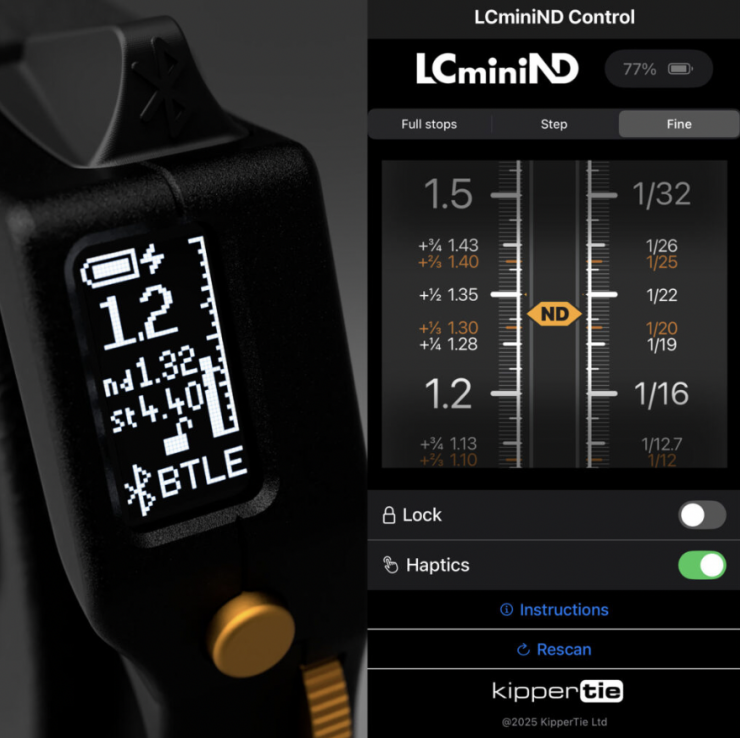
Via Bluetooth and the dedicated iOS app, you can make all of these adjustments from a distance, and even rack the ND smoothly during a live take.
How do you power it?
Internally powered, the LCminiND can be charged at any time via USB-C, and requires nothing from the host camera. It can run for around 24 hours via its built-in battery.
Build Quality

The casing for the LCminiND is made out of aircraft-grade aluminum.
Prototype
KipperTie is also working on a prototype Revolva-style cartridge where you will actually be able to move the LCminiND out altogether, so you have a clear setting with no ND. This obviously will make the whole adapter drop-in filter mechanism a lot larger.
Pricing & Availability
The KipperTie LCminiND can now be purchased for £695.00.
Each LCminiND ships in a custom-made foam-lined hard case, complete with USB A to C charging cable and durable dust cover.
LC-Tec Electronic Variable Diffusion (EVD) filter system
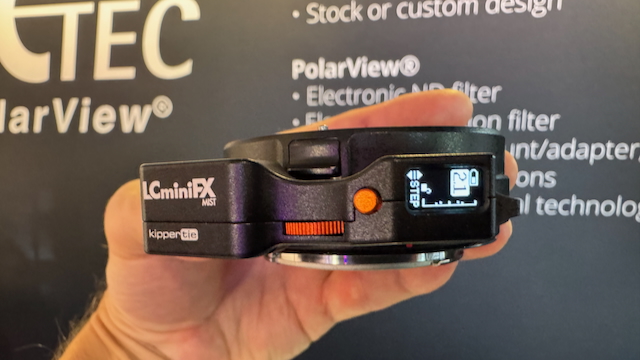
The LC-Tec Electronic Variable Diffusion (EVD) filter system is a really clever and interesting new product that allows you to electronically control the amount of diffusion that is being produced. KipperTie will have both matte box-based and rear filter adapter solutions available.
Back at IBC 2024 in Amsterdam, LC-Tec showed a prototype of this technology.
This is pretty impressive technology, and from the demonstration I saw, it worked really well. The principle of how it works is similar to that of electronic variable ND where you are applying a small electronic charge to glass to change its properties. Being able to do this allows you to dial in precise amounts of diffusion depending on your needs.
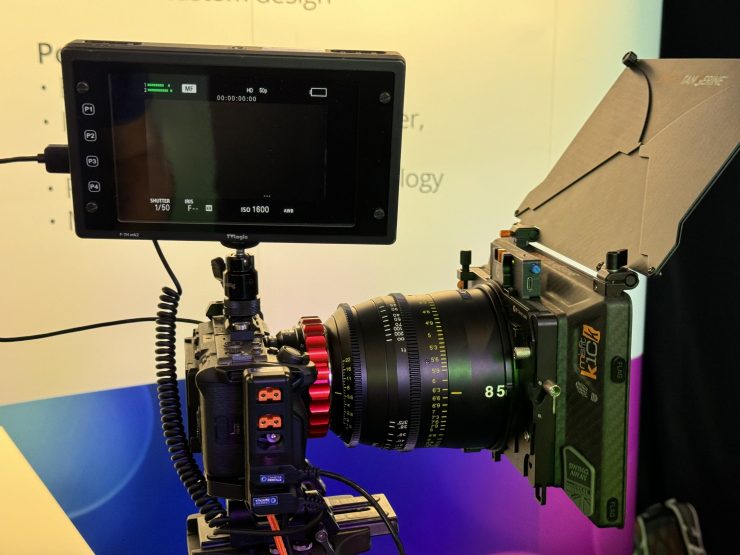
Now, LC-Tec is just a manufacturer and they don’t sell their products directly to the public, so an interested company could order their technology to use in their products. What was interesting was that they said they were looking into incorporating the technology directly into camera lenses.
Key features
- The LC-Tec EVD is designed to be mounted in a matte box or rear filter stage and offers a continuous variation of diffusion strength.
- Cinematographers can adjust diffusion intensity during a shot for creative effects, a feature previously unavailable with modern cinema equipment.
- The EVD prototype consists of a 4” x 5.65” glass filter and a small controller box.
Another world first is the potential for the electronic diffusion to be applied at different strengths to selected areas of the filter, giving cinematographers high levels of control. For example, this localized diffusion could be used to bloom light sources without affecting the skin detail or subject, or conversely to soften skin detail while retaining the overall characteristics of the rest of the frame.
The diffusion can also be adjusted to preset values similar to how you would use conventional filters.
